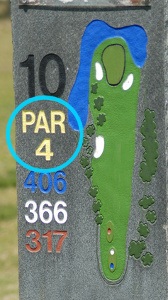
Par
In the world of golf, the term “Par” plays a crucial role in determining the level of difficulty of a hole and serves as a standard for scoring. Understanding what Par means is essential if you want to improve your golf game and keep track of your performance accurately.
- Par is the number of strokes a skilled golfer is expected to need to complete a hole or a course.
- It represents the ideal score a golfer should aim for on each hole.
- Par is influenced by various aspects such as hole length, obstacles, and the general layout of the course.
Par is usually represented by a number, such as 3, 4, or 5. Let's explore what each of these numbers signifies:
- A Par 3 hole is relatively short and is intended to be completed in three strokes. These holes typically range from 100 to 250 yards in length. Par 3 holes are considered less challenging, and scoring below par is a common goal.
- Par 4 holes are of moderate length, usually ranging between 250 and 470 yards. It is expected to take a skilled golfer four strokes to complete a Par 4 hole. These holes offer a good balance between difficulty and scoring opportunities.
- Par 5 holes are the longest and require the most strokes to complete. These holes are usually over 470 yards in length and provide ample scoring opportunities. Skilled golfers aim to complete a Par 5 hole in five strokes or less.
Scoring in relation to Par is used to evaluate a golf player's performance. There are three common terms used to describe scoring relative to Par:
- Birdie: When a player completes a hole one stroke under Par, it is referred to as a birdie. For example, if a golfer completes a Par 4 hole in three strokes, they score a birdie.
- Par: When a player completes a hole using the expected number of strokes, it is referred to as making par. For instance, scoring 4 on a Par 4 hole is making par.
- Bogey: When a player completes a hole one stroke over Par, it is referred to as a bogey. For example, if a golfer completes a Par 4 hole in five strokes, they score a bogey.
Understanding Par is essential for setting goals and measuring progress in golf. It allows players to evaluate their performance and determine areas for improvement. By aspiring to score below Par, golfers challenge themselves to become more skilled and strategic in their game.
Next time you step onto the golf course, pay attention to the Par value for each hole. Use it as a benchmark to set goals, track your progress, and ultimately enhance your golfing experience.





